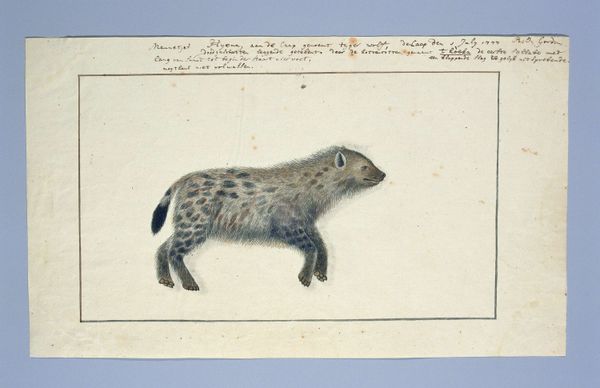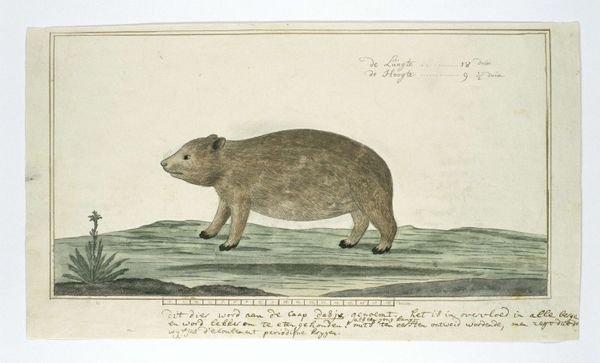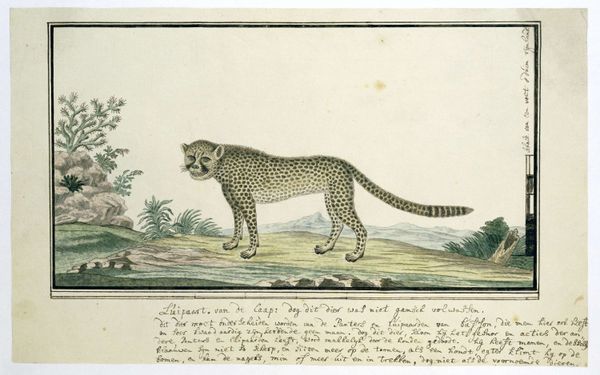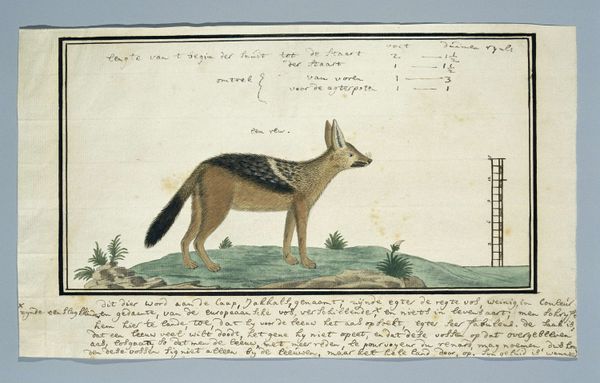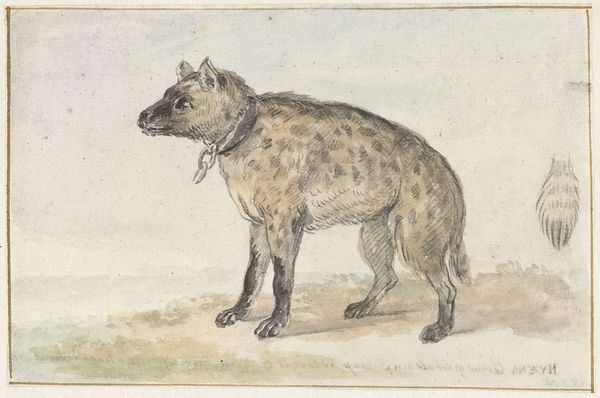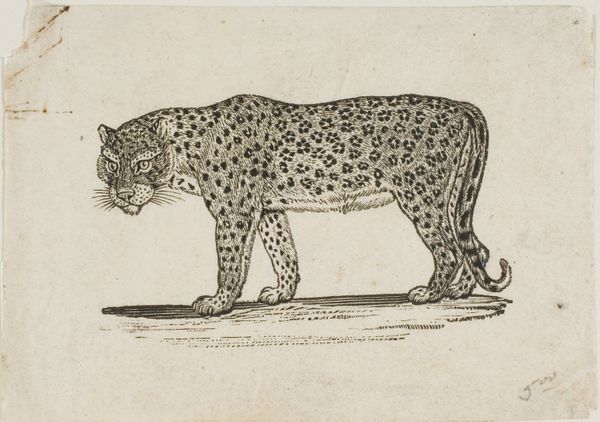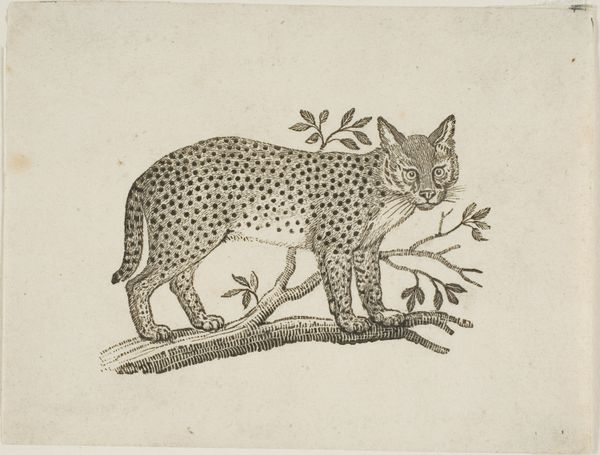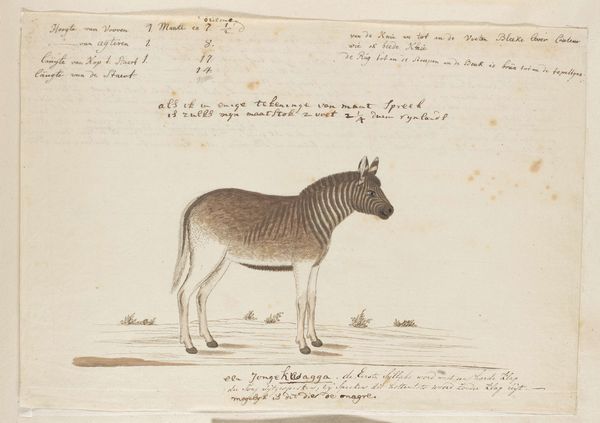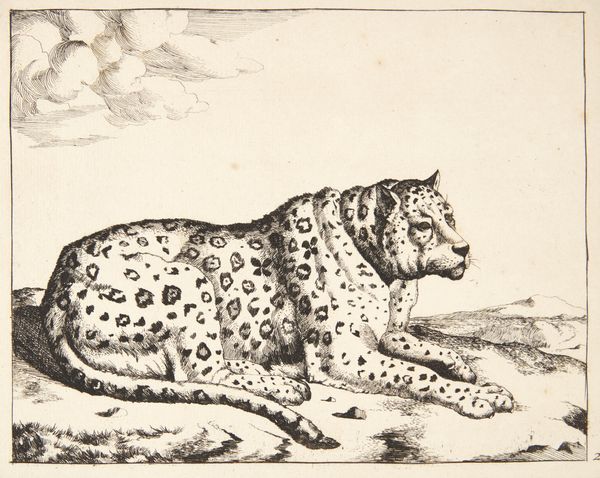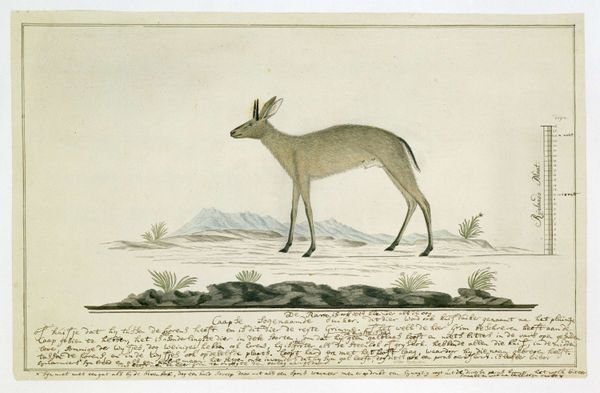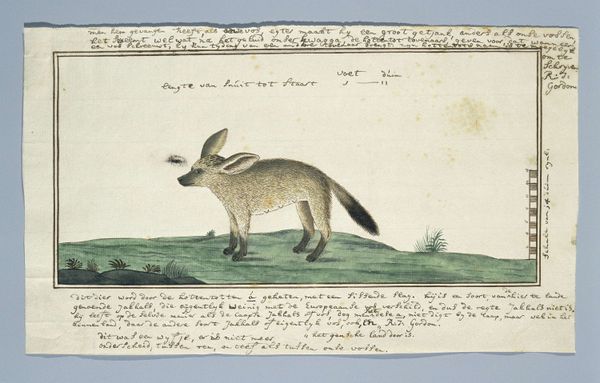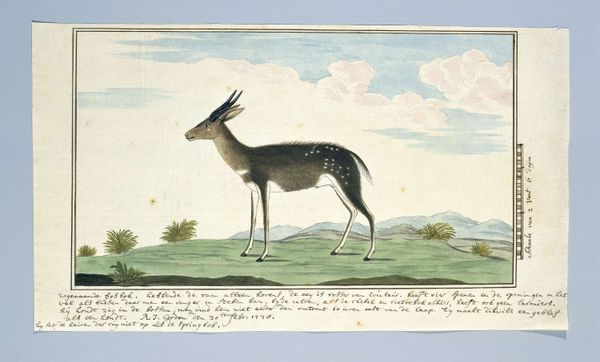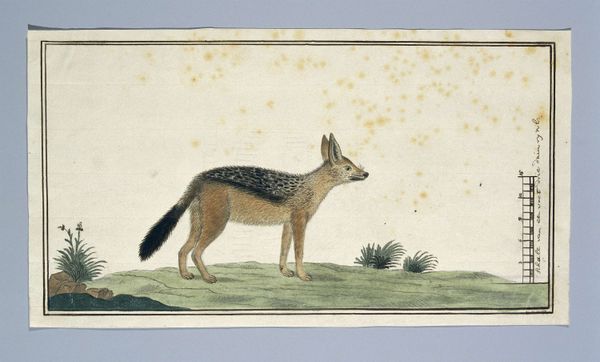
drawing, watercolor
#
drawing
#
water colours
#
landscape
#
watercolor
#
coloured pencil
#
naturalism
#
realism
Dimensions: height 660 mm, width 480 mm, height 271 mm, width 421 mm, height 245 mm, width 400 mm
Copyright: Rijks Museum: Open Domain
Editor: So, we're looking at Robert Jacob Gordon's watercolor and pencil drawing of a Spotted Hyena, possibly from 1777. The realism is striking, but what’s fascinating is the contrast between the detailed hyena and the relatively simple landscape. What do you make of this drawing? Curator: It's intriguing to consider this work within the context of resource extraction. Gordon was, among other things, a military commander and explorer working for the Dutch East India Company. This image isn't just a scientific observation; it's documentation tied to colonial ambition and the company's material interests in Southern Africa. The very paper and pigments are products of global trade networks built upon exploited labor. Editor: I hadn’t thought about it like that. So the act of depicting the hyena itself is linked to broader systems of exploitation? Curator: Exactly. The materials themselves have a history. Where did the watercolor pigments come from? How were they processed? And consider the labor involved in producing the paper, the brushes – every aspect points to a complex web of production and consumption fueled by colonial expansion. Does this change how you view the landscape? Editor: It does, it's not a neutral backdrop but another resource. So, while the hyena is the subject, the artwork is revealing the material and labor conditions behind its creation. Is this kind of analysis a way to reclaim agency for the exploited? Curator: That’s a very insightful point! By foregrounding the means of production and the historical context, we can acknowledge the often-hidden costs associated with seemingly straightforward depictions of the natural world, maybe allowing us to better reflect on those inequalities. Editor: I’m leaving this conversation with a whole new set of questions, especially regarding the untold stories embedded within the artwork’s materials! Curator: Indeed! Art history constantly asks us to reconsider not just what we see, but how it came to be made.
Comments
No comments
Be the first to comment and join the conversation on the ultimate creative platform.
